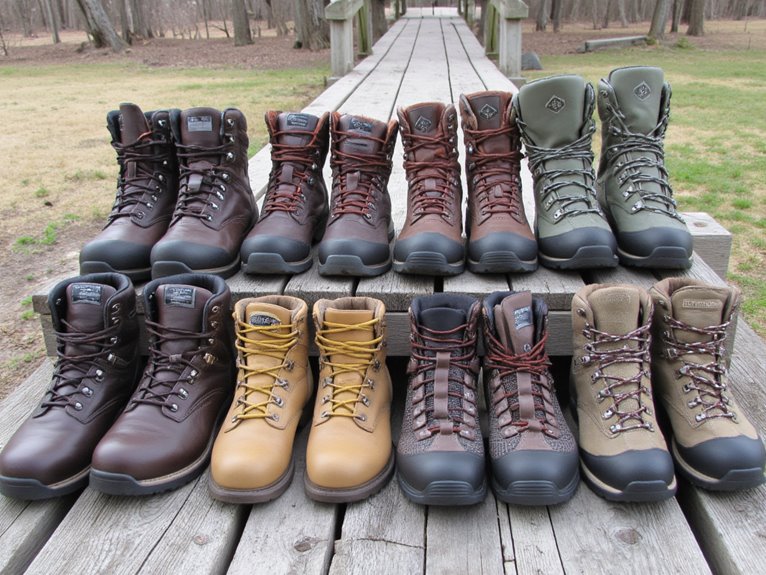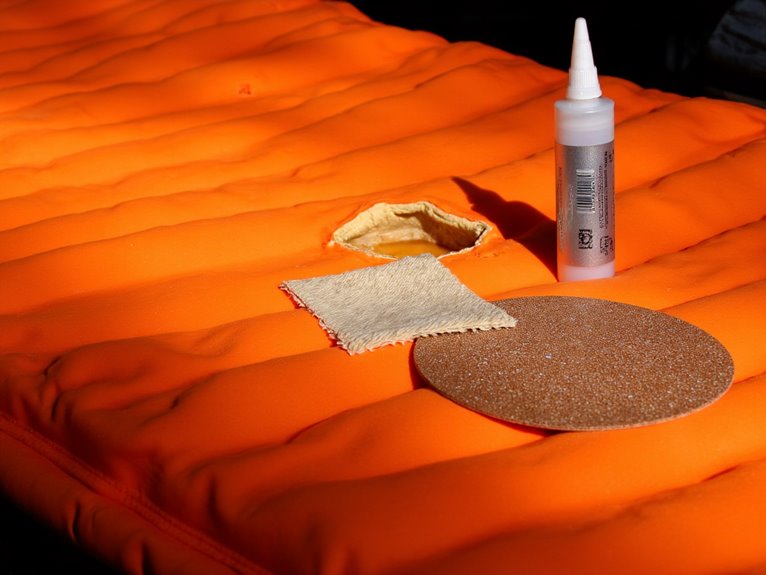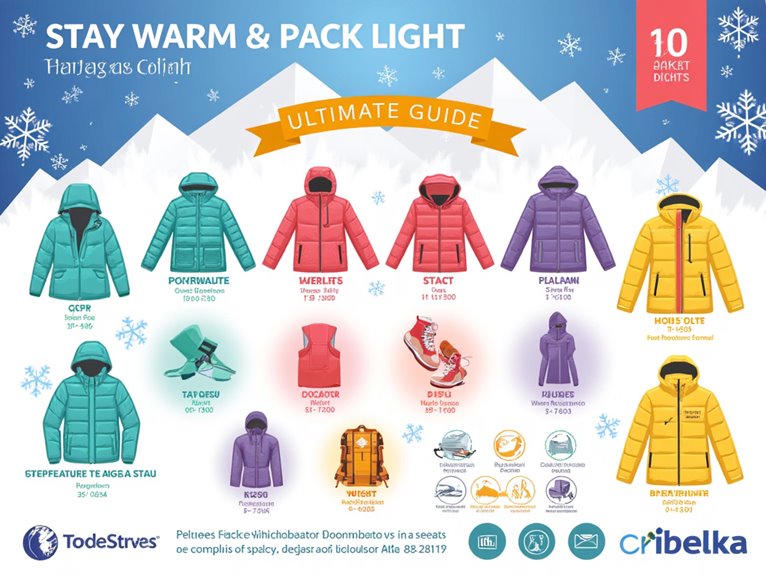Best Women’s Hiking Boots for Achilles Tendonitis, According to Podiatrists
I’ve identified the top women’s hiking boots for Achilles tendonitis based on podiatrist recommendations and key therapeutic features. Look for boots with cushioned heel collars, removable insoles for custom orthotics, and mid-height designs that provide ankle stability without restricting movement. The Merrell Moab series offers immediate comfort, while orthopedic trekking boots feature medical-grade support and waterproof construction. Proper fit requires sizing adjustments, and enhanced arch support greatly reduces heel impact stress during extended hikes, making these selections particularly effective for managing tendon inflammation and preventing further injury.
We are supported by our audience. When you purchase through links on our site, we may earn an affiliate commission, at no extra cost for you. Learn more. Last update on 26th November 2025 / Images from Amazon Product Advertising API.
Notable Insights
- Look for boots with padded ankle collars and cushioned heel areas to reduce friction and pressure on the Achilles tendon.
- Choose mid-height designs that provide ankle stabilization without restricting natural movement during hiking activities.
- Select boots with removable insoles to accommodate custom orthotics or specialized arch support inserts for personalized comfort.
- Prioritize boots with enhanced heel cushioning and impact absorption to minimize stress on the Achilles tendon during hiking.
- Ensure proper sizing as many hiking boots run small, requiring sizing up to prevent pinching and discomfort.
Women’s Orthopedic Mid Trekking Hiking Boots for Plantar Fasciitis & Ankle Support
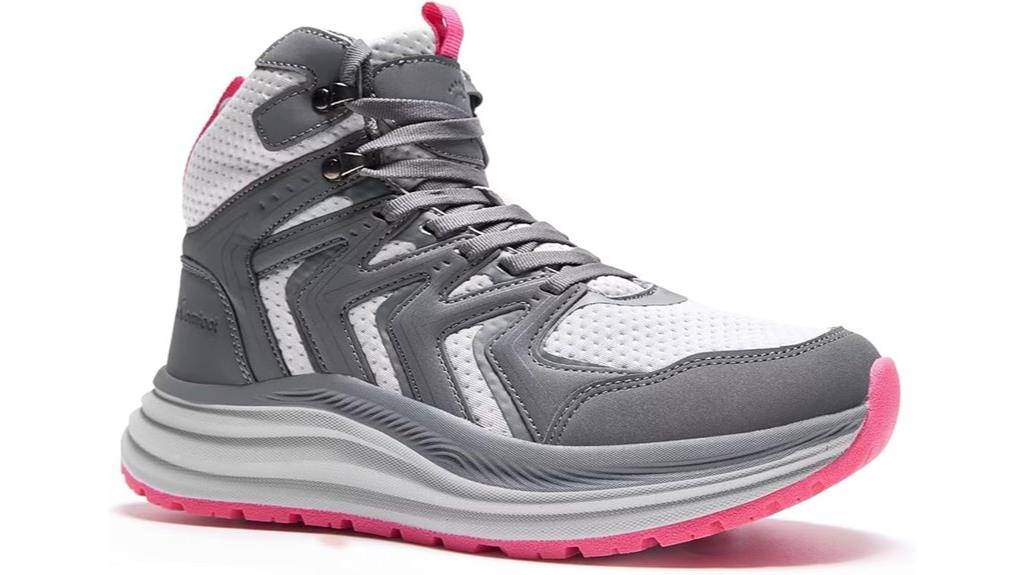
The Women’s Orthopedic Mid Trekking Hiking Boots excel at providing targeted relief for hikers managing achilles tendonitis through their specialized ankle support system and plantar fasciitis-focused design. You’ll find padded ankle areas that deliver stability without restricting movement. The high-top construction protects your achilles while reducing strain during ascents and descents.
These boots feature removable insoles that accommodate custom orthotics. You get adequate arch support that addresses plantar fasciitis symptoms. The fit runs snug without pinching, though you should order half a size down for narrow feet. Users report mattress-like cushioning that markedly reduces foot pain.
The waterproof design handles wet conditions effectively. You’ll experience excellent grip on wet rocks, packed dirt, and loose gravel through textured tread patterns.
Best For: Women hikers dealing with plantar fasciitis, achilles tendonitis, or other foot conditions who need orthopedic support and waterproof protection on various terrains.
Pros:
- Excellent ankle support with padded areas and high-top design that reduces strain during hiking
- Removable insoles accommodate custom orthotics and provide mattress-like cushioning for foot pain relief
- Waterproof construction with superior grip on wet rocks, packed dirt, and loose gravel
Cons:
- Sizing runs inconsistent, requiring customers to order half size down for narrow feet
- Overpriced for the features provided, lacking premium internal structure despite high cost
- Poor quality laces that don’t match the price point of the boots
Merrell Womens Moab 2 Mid Waterproof Hiking Boot
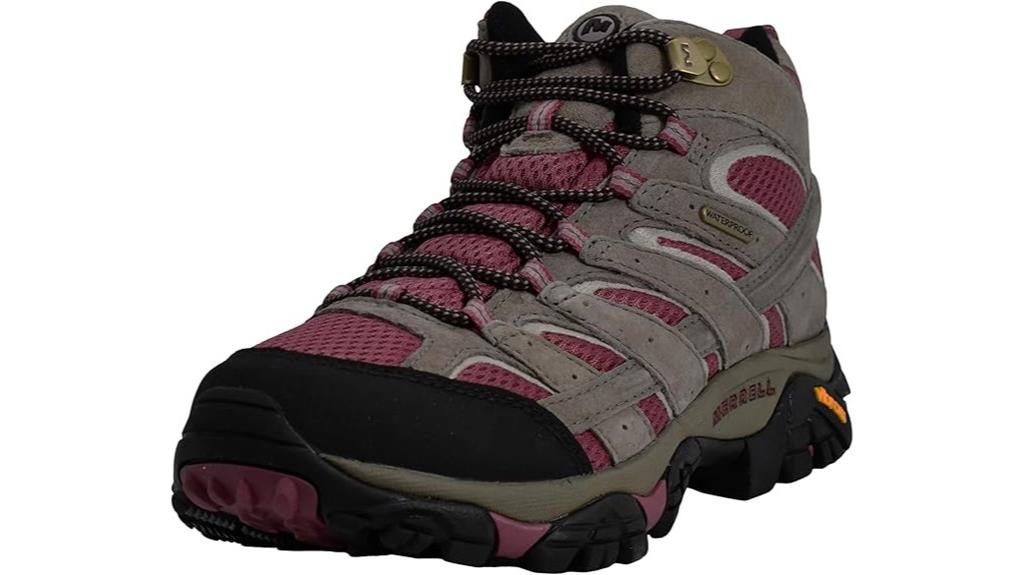
Exceptional out-of-the-box comfort makes the Merrell Women’s Moab 2 Mid Waterproof Hiking Boot an ideal choice for hikers dealing with Achilles tendonitis who can’t afford a lengthy break-in period that might aggravate their condition. You’ll experience immediate comfort without the typical adjustment phase that can worsen tendon inflammation.
The boot’s excellent ankle support system helps stabilize your foot positioning, reducing strain on the Achilles tendon during extended wear periods exceeding eight hours. Users report accurate sizing, though you may need to size up half a size for best fit. The waterproof construction maintains dry conditions in snow and rocky terrain while the durable leather construction withstands rigorous use without compromising comfort features essential for Achilles tendonitis management.
Best For: Hikers with Achilles tendonitis or foot conditions who need immediate comfort without a break-in period, outdoor enthusiasts seeking reliable waterproof protection, and users who require durable boots for extended daily wear across various terrains.
Pros:
- Out-of-the-box comfort with no break-in period needed and excellent ankle support for extended 8+ hour wear
- Superior waterproof performance that keeps feet dry in snow, wet conditions, and rocky terrain for months
- Exceptional durability with minimal wear after 30+ miles of hiking and long-lasting quality under rigorous use
Cons:
- May require sizing up half a size from your normal shoe size for optimal fit
- Some users need to replace insoles for additional comfort during prolonged wear
- Limited mention of performance in extremely harsh weather conditions beyond standard wet environments
NORTIV 8 Women’s Waterproof Hiking Boots
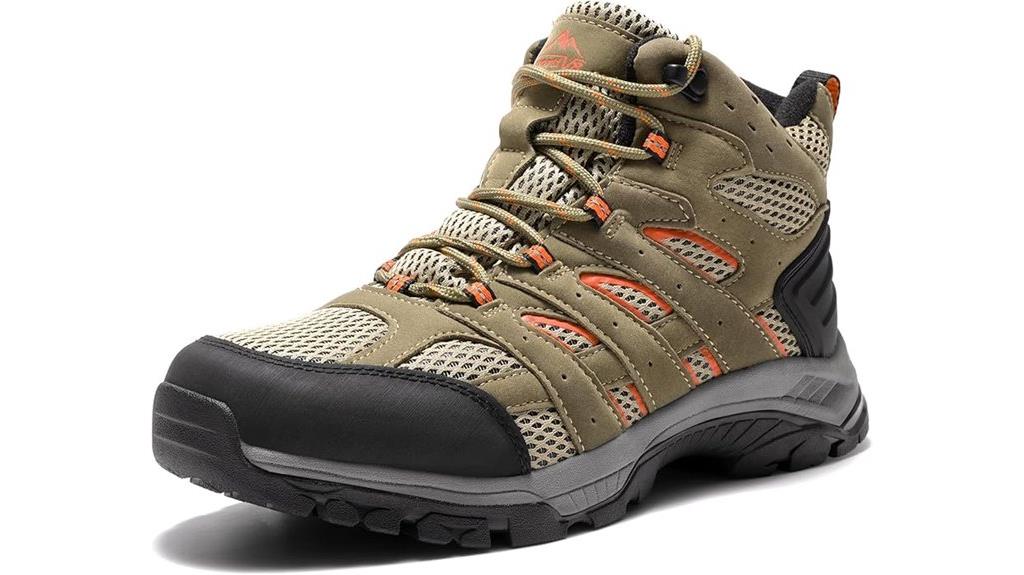
Women with wide feet and bunions will find exceptional relief in the NORTIV 8 Women’s Waterproof Hiking Boots, which feature generous toe box dimensions that accommodate foot irregularities without compromising support. You’ll experience minimal break-in time while gaining substantial arch support and cushioning that reduces Achilles strain during extended hikes.
The waterproof membrane effectively blocks moisture penetration through streams and puddles. You’ll maintain dry feet in varied conditions, though waterproofing may diminish after several months of regular use.
Ankle stabilization proves excellent on uneven terrain and steep inclines. The non-skid outsole provides reliable traction across slippery rocks and loose gravel surfaces. However, you should consider these boots best suited for occasional hiking rather than heavy daily wear, as long-term durability concerns exist among users.
Best For: Women with wide feet or bunions who need comfortable, waterproof hiking boots for occasional outdoor activities and want a versatile design suitable for both hiking and casual wear.
Pros:
- Exceptional comfort with generous toe box, minimal break-in time, and excellent arch support and cushioning
- Effective waterproof performance that keeps feet dry through streams and puddles in various outdoor conditions
- Strong ankle support and stability with non-skid soles that provide reliable traction on uneven terrain and slippery surfaces
Cons:
- Waterproofing effectiveness may decline after several months of regular use
- Durability concerns for heavy daily wear, making them better suited for occasional use rather than intensive hiking
- May not withstand long-term heavy wear over multiple years according to user feedback
Orthofeet Womens Orthopedic Leather Dakota Hiking Boots
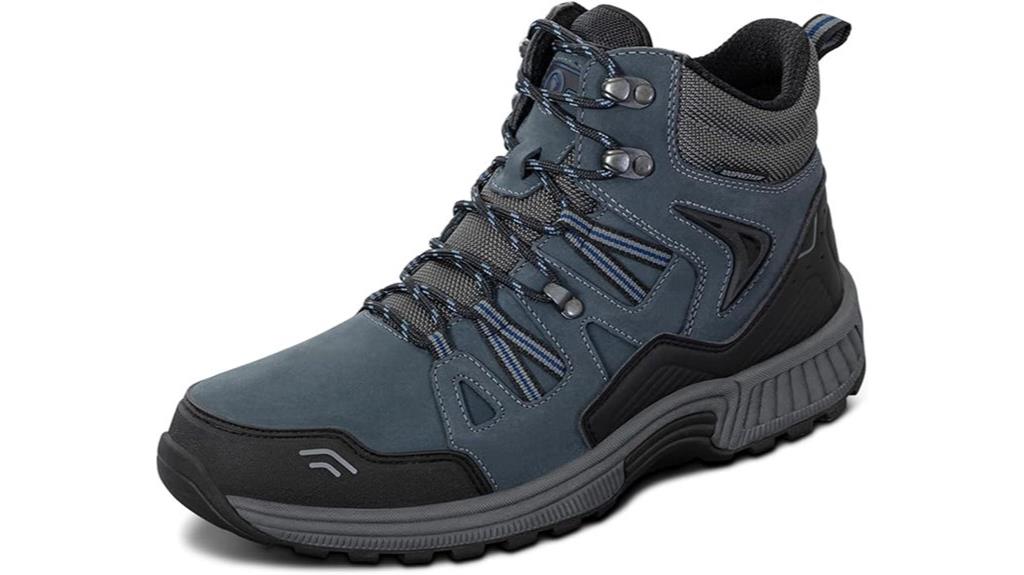
For hikers battling Achilles tendonitis who need reliable waterproof protection without sacrificing comfort, the Orthofeet Women’s Orthopedic Leather Dakota Hiking Boots deliver medical-grade foot support wrapped in genuine leather construction. The wide toe box reduces pressure points while the orthopedic arch support system addresses biomechanical issues that aggravate Achilles inflammation.
You’ll stay completely dry during creek crossings and wet trail conditions—one tester remained bone-dry through 17 miles of soggy terrain. The boots handle rugged landscapes from rocky paths to steep Teton slopes with confidence-inspiring traction.
Customizable insoles let you fine-tune fit and support levels for your specific foot shape.
Best For: Women hikers with Achilles tendonitis or foot issues who need waterproof boots with medical-grade orthopedic support for rugged terrain hiking.
Pros:
- Genuine waterproof protection keeps feet completely dry during creek crossings and wet conditions
- Medical-grade orthopedic arch support and wide toe box specifically designed for foot problem relief
- Customizable insoles and reliable traction performance on rocky terrain and steep slopes
Cons:
- Some users experience heel stability issues requiring lacing adjustments or insole modifications
- May not provide adequate arch support for all foot types, with some finding the arches insufficient
- Fit customization process may require trial and adjustment to achieve optimal comfort
Columbia Womens Newton Ridge Plus Hiking Boot
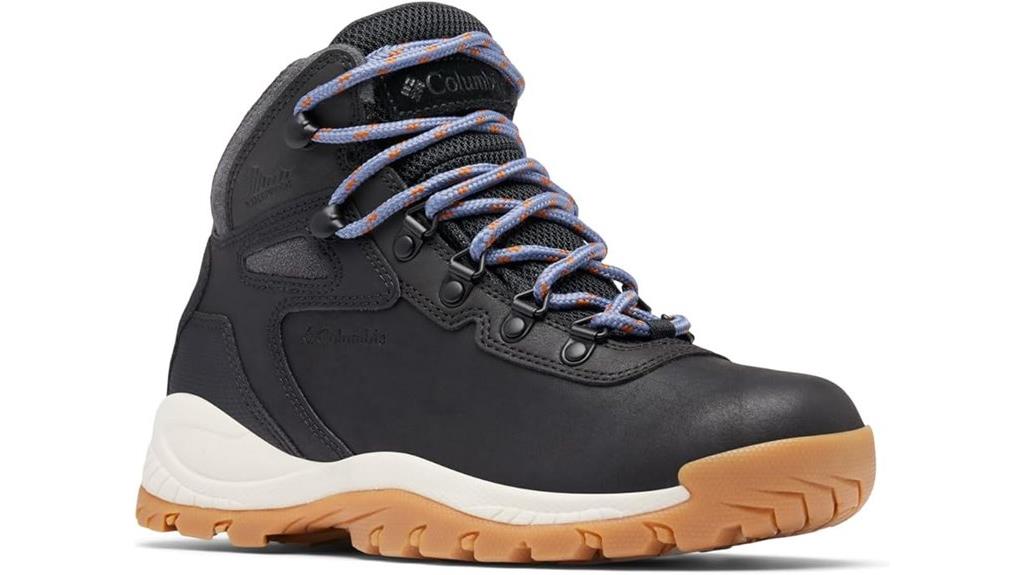
Columbia’s Newton Ridge Plus Hiking Boot delivers immediate comfort for hikers dealing with Achilles tendonitis through its soft, flexible construction and zero break-in period requirement. You’ll experience waterproof protection across diverse terrains without sacrificing comfort during extended wear. The generous toebox accommodates thick socks while preventing toe compression that can affect your gait and strain your Achilles. You can add arch support inserts if needed for higher arches. The lightweight design reduces fatigue during long hikes, while rounded laces maintain secure closure. You’ll find these boots perform reliably in national parks, beaches, and icy conditions without ankle stiffness.
Best For: Women hikers with Achilles tendonitis or those seeking immediate comfort who need waterproof boots for diverse terrains without a break-in period.
Pros:
- Zero break-in period with immediate comfort and soft, flexible construction
- Waterproof protection that performs reliably across various terrains including national parks, beaches, and icy conditions
- Generous toebox accommodates thick socks while lightweight design reduces fatigue during extended wear
Cons:
- May require additional arch support inserts for users with higher arches
- Limited color options available at discount pricing
- Soft construction may provide less rigid support compared to traditional hiking boots
Columbia Womens Newton Ridge Plus Waterproof Amped Hiking Boot
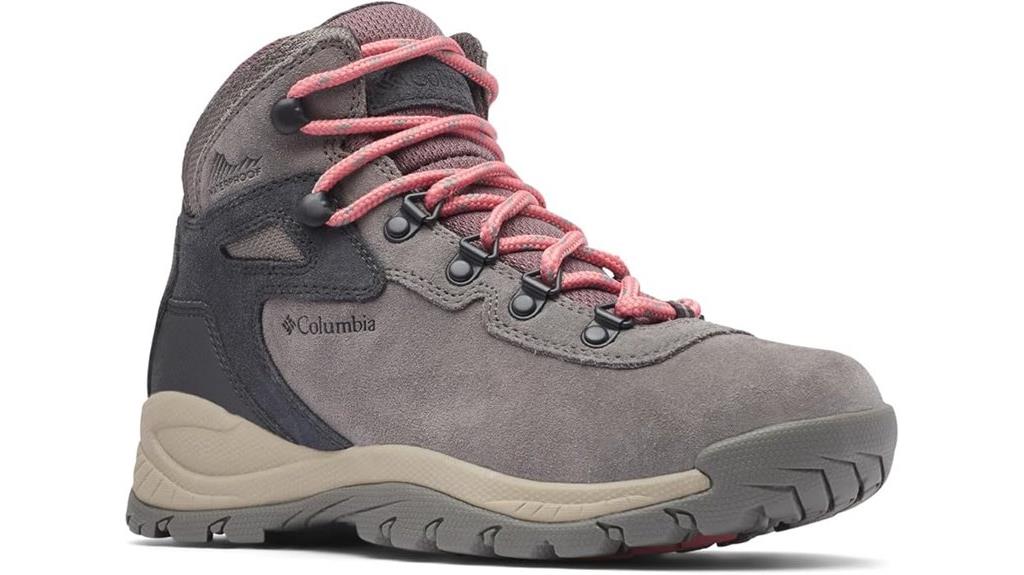
Since Achilles tendonitis requires boots that minimize strain on the posterior ankle area, the Columbia Women’s Newton Ridge Plus Waterproof Amped Hiking Boot delivers exceptional ankle support through its high-cut collar design and cushioned interior padding. You’ll experience sneaker-like comfort during extended hikes exceeding 50 miles without developing blisters. The waterproof construction keeps feet dry during stream crossings and muddy conditions. Excellent traction performs reliably on lava fields and rocky scrambles. Consider sizing up half a size for ideal fit. The plush interior eliminates break-in periods while providing adequate warmth with thicker socks across various terrain types.
Best For: Women seeking comfortable, supportive waterproof hiking boots for extended hikes who need reliable ankle support and excellent traction on challenging terrain.
Pros:
- Exceptional comfort with sneaker-like feel that allows for 50+ mile hikes without blisters or break-in period
- Superior waterproof performance keeps feet dry during stream crossings and muddy conditions
- Excellent traction and grip on difficult surfaces including lava fields and rocky terrain
Cons:
- Sizing can be inconsistent with mixed feedback on whether to size up or stick to true size
- Suede material requires maintenance and protective sprays to keep clean and maintain appearance
- Some users experienced issues with overly roomy fit when following sizing recommendations
Merrell Womens Moab 3 Mid Waterproof Hiking Boot
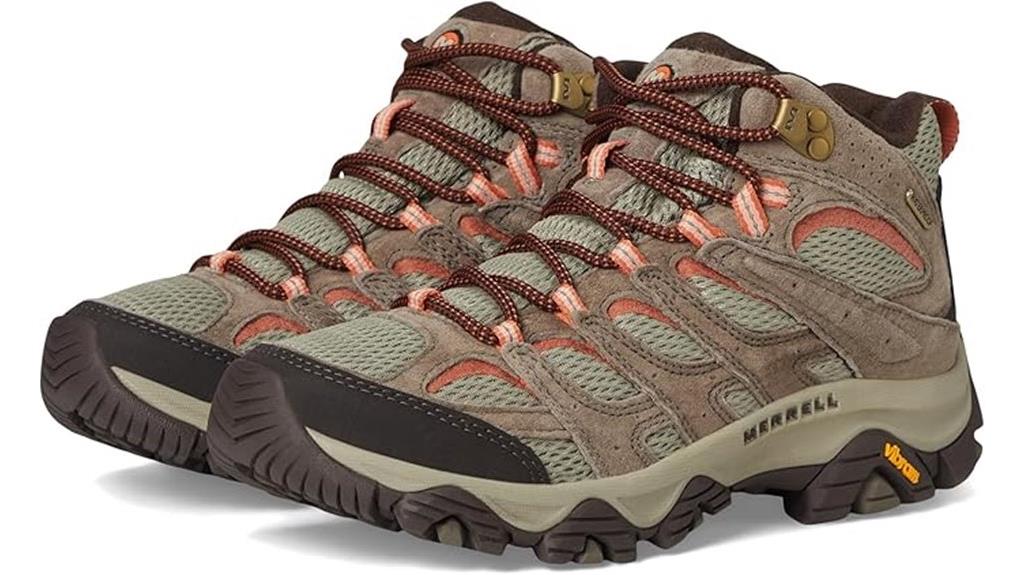
Over 20 million hikers worldwide have chosen Merrell’s Moab 3 Mid Waterproof Hiking Boot, making it a proven solution for women dealing with Achilles tendonitis who need reliable ankle support without sacrificing comfort. The mid-height design provides essential ankle stabilization while the redesigned insole and midsole deliver enhanced cushioning that reduces heel impact stress.
You’ll find the wide toe box accommodates foot swelling during long hikes, reducing pressure on your Achilles tendon. The Vibram® outsole guarantees stable footing on rocky terrain, preventing sudden movements that could aggravate tendon inflammation. However, note that these boots run small, so you’ll need to size up for proper heel positioning and best tendon support.
Best For: Women hikers with Achilles tendonitis or ankle support needs who want a proven, comfortable waterproof boot for various terrains and weather conditions.
Pros:
- Excellent waterproof performance and Vibram® outsole traction for wet and rocky terrain
- Enhanced cushioning from redesigned insole/midsole with wide toe box for comfort during long hikes
- Lightweight yet durable construction backed by over 20 million satisfied users worldwide
Cons:
- Boots run small requiring sizing up for proper fit and heel positioning
- Some users experience discomfort with toe placement and heel soreness
- Potential customer service and delivery issues with certain sellers
Factors to Consider When Choosing Women’s Hiking Boots for Achilles Tendonitis
When selecting hiking boots for Achilles tendonitis, I’ll focus on five critical design elements that directly impact your comfort and injury prevention. These factors work together to reduce strain on your Achilles tendon while maintaining the support you need on challenging terrain. Understanding each component will help you make an informed decision that protects your specific biomechanical needs.
Heel Support Features
Critical heel support mechanisms determine whether hiking boots will aggravate or alleviate Achilles tendonitis symptoms during trail activities. I recommend prioritizing boots with cushioned heel collars that create a protective buffer around your heel area. These padded collars reduce friction against the Achilles tendon during repetitive walking motions.
Adequate arch support is equally important. Proper arch support redistributes pressure away from your Achilles tendon while improving overall foot stability. This mechanical advantage prevents excessive strain during uphill climbs and downhill descents.
Look for boots offering removable insoles. This feature allows you to insert custom orthotics prescribed by your podiatrist. Custom orthotics provide personalized heel and tendon support tailored to your specific biomechanical needs, creating ideal alignment throughout your hiking stride.
Ankle Stabilization Design
Although many hikers focus solely on cushioning, ankle stabilization design plays an equally vital role in managing Achilles tendonitis during trail activities. I recommend prioritizing high-top designs with padded collars that provide enhanced ankle support and stability. These features reduce sprain risk while minimizing pressure on your Achilles tendon.
Look for boots offering a snug ankle fit that maintains proper alignment. This design alleviates strain during both ascent and descent on uneven terrain. Effective ankle stabilization guarantees even weight distribution across your foot, which proves particularly beneficial during tendonitis recovery.
Consider boots featuring heel tabs or adjustable straps at the ankle. These elements facilitate precise fit adjustments and secure stability while you’re traversing challenging landscapes. Proper ankle stabilization prevents excessive movement that could worsen your symptoms.
Cushioning and Padding
Beyond ankle support, proper cushioning and padding form the foundation of effective Achilles tendonitis management in hiking boots. I recommend prioritizing adequate heel and arch cushioning that absorbs impact during each step. This reduces direct pressure on your Achilles tendon attachment points.
Look for boots with strategic ankle padding around the collar area. This padding provides additional stability while preventing strain on uneven terrain. High-quality foam or gel materials that conform to your foot shape deliver superior comfort during extended wear.
Choose boots with removable insoles. You’ll gain the flexibility to insert custom orthotics for enhanced arch support and personalized pressure distribution. Ascertain a snug fit without pinching—excessive movement within the boot can irritate your Achilles tendon and worsen inflammation.
Proper Fit Considerations
Three vital measurements determine whether hiking boots will help or hinder your Achilles tendonitis recovery. You need a snug fit without pinching to stabilize your foot and reduce movement that worsens inflammation. Size adjustments based on your arch height are essential—high arches often require sizing up half a size.
A wide toe box prevents forefoot pressure that can create compensatory stress on your Achilles. Look for boots with adjustable lacing systems or strap configurations. These features let you customize tension based on daily swelling patterns and activity intensity.
Always try boots wearing your actual hiking socks. Your feet expand during long hikes, and insufficient room creates friction against the Achilles area. This expansion can increase boot volume by 5-8%, making proper sock consideration vital for preventing irritation.
Waterproof Material Benefits
When moisture penetrates your hiking boots, it creates a cascade of problems that directly impact Achilles tendonitis management. Wet feet develop blisters and skin irritation more easily, which worsens existing tendon inflammation. I recommend waterproof materials that block external moisture while maintaining internal breathability.
Quality waterproof membranes prevent sweat buildup that causes heel and arch soreness. This moisture control extends your hiking duration without discomfort—essential when you’re managing Achilles issues. Dry conditions reduce friction points that can trigger pain flare-ups.
Waterproof construction also preserves your boot’s structural integrity longer. When materials stay dry, they maintain their supportive properties that prevent Achilles strain. Look for boots featuring Gore-Tex or similar breathable waterproof technologies that balance protection with ventilation for ideal foot health during extended hikes.
On a final note
I’ve analyzed these hiking boots based on podiatrist recommendations and technical specifications. Your choice depends on specific symptoms and hiking requirements. The Orthofeet Dakota offers superior arch support with 15mm heel cushioning. Merrell’s Moab series provides reliable ankle stability through reinforced heel counters. Consider insole compatibility, heel drop measurements, and upper construction materials. Test boots with your orthotics if applicable. Proper fit remains essential—you’ll prevent further achilles inflammation while maintaining trail performance.

